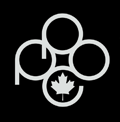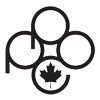Sunday, April 2, 2023
AI and Copyright: Critical Evolving Issues for Photographers
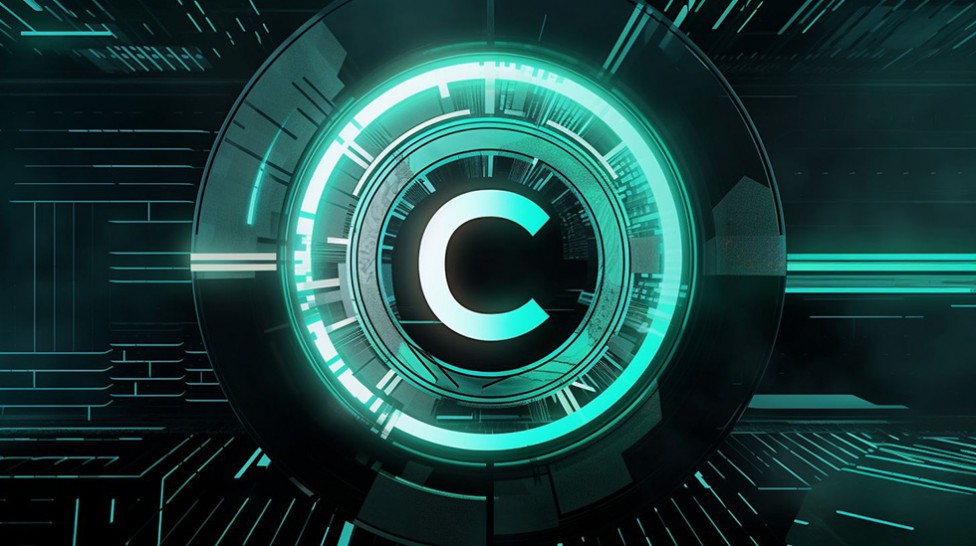
Abstract: In this post, lawyer and award-winning landscape photographer Jason Marino discusses critical copyright and related issues every photographer using AI needs to know right now. With reference to popular AI image generation platforms such as Midjourney, Stable Diffusion, and Dall-E, Jason breaks down the need-to-know issues into bite-sized chunks easily digestible by photographers of every genre and level. He examines the latest, headline-grabbing cases working their way through the courts as well as the March 2023 guidance issued by the U.S.Copyright Office, and, drawing lessons from those cases and guidance, he suggests several practical points that photographers should keep in mind when using AI in order to maximize their potential for copyright protection and minimize the potential for other intellectual property problems.
Artificial intelligence (AI) is changing the way photographers create and use images. While AI can provide many benefits, it also presents new challenges and issues that photographers must be aware of. In this post, we’ll explore important copyright and related issues for photographers to keep in mind when using AI. These include issues related to the creation of AI-generated images (input issues), and issues related to the ownership and use of images generated using AI (output issues). But before we get into those issues, let’s be clear on what we mean by AI and copyright.
What is AI?
AI is a branch of computer science that focuses on creating intelligent machines and programs that can perform tasks that usually require human intelligence, such as learning, problem-solving, perception, and decision-making. AI algorithms can be trained on vast amounts of data to recognize patterns, make predictions, and automate tasks. In this post, we’ll be focused on AI models that can be used to create photo-realistic images. Current, popular examples include Midjourney, Stable Diffusion, and Dall-E-, among others.
What is Copyright?
As photographers, it’s important for us to have at least a basic understanding of copyright, so let’s take a moment to level-set before we get into the issues. Copyright is a type of intellectual property. It’s a right that protects original works of authorship, including literary, dramatic, musical, artistic (including photographic), and certain other intellectual works. In Canada and the United States, copyright law is governed primarily by the federal Copyright Act of each country. Copyright owners generally enjoy a bundle of certain exclusive rights, including the right to produce or reproduce the work (including making electronic copies), publish the work, make the work available online to the public, create adaptations (derivative works based on the work) and distribute copies of the work (by sale or license). Copyright protects the expression of an idea, not the idea itself. In the context of photography, copyright gives the photographer the right to control how their images are used, reproduced, and distributed, as well as moral rights – the right of an artist to preserve the integrity of their work.
Now that we have a foundational understanding of AI and copyright, let’s explore some of the issues photographers should be aware of when creating and using AI-generated images.
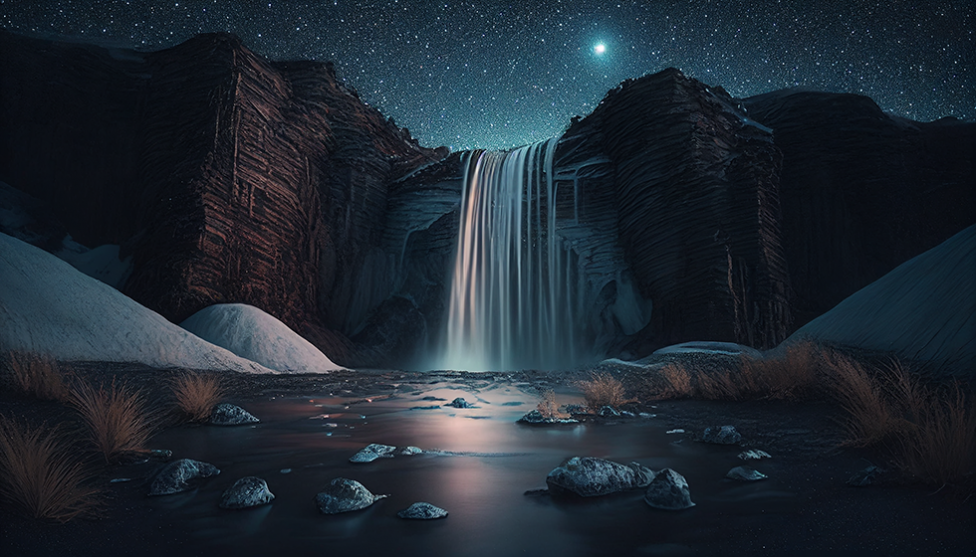
Creation of AI-Generated Images
Copyright Infringement
When using AI, photographers should be mindful of the data being used to train the algorithm. AI image generation models are trained on vast data sets (millions or billions of images), raising the possibility that the data used to train the AI could include copyrighted photographs. This raises concerns about whether using such data without permission is a violation of copyright laws.
The recent Getty Images lawsuit against Stability AI, the creator of AI art generator Stable Diffusion, highlights this issue and takes direct aim at the issue of copyright. Getty Images had this to say in its press release issued on January 17, 2023:
“This week Getty Images commenced legal proceedings in the High Court of Justice in London against Stability AI claiming Stability AI infringed intellectual property rights including copyright in content owned or represented by Getty Images. It is Getty Images’ position that Stability AI unlawfully copied and processed millions of images protected by copyright and the associated metadata owned or represented by Getty Images absent a license to benefit Stability AI’s commercial interests and to the detriment of the content creators.
Getty Images believes artificial intelligence has the potential to stimulate creative endeavors. Accordingly, Getty Images provided licenses to leading technology innovators for purposes related to training artificial intelligence systems in a manner that respects personal and intellectual property rights. Stability AI did not seek any such license from Getty Images and instead, we believe, chose to ignore viable licensing options and long-standing legal protections in pursuit of their stand-alone commercial interests.”
In addition to its U.K. lawsuit, Getty Images also filed a similar lawsuit against Stability AI in the United States on February 3, 2023.
In these cases, Getty Images is arguing copyright infringement (among other things), and the defendants will very likely argue “fair use”. The fair use doctrine in the U.S., and the similar “fair dealing” doctrine in Canada, allow for limited use of copyrighted materials without obtaining permission from the copyright holder, subject to certain conditions. These exceptions to copyright are based on the notion that some uses of copyrighted material are considered fair. Depending on the jurisdiction, fair use or fair dealing might include factors such as research, private study, education or training, parody or satire, criticism, commentary, and news reporting, and whether a particular use or dealing of copyrighted material is considered fair will depend on several factors, which, again depending on the jurisdiction, might include factors such as the purpose and character of the use, the nature of the copyrighted work, the amount and substantiality of the portion used, whether alternatives to the use exist, and the effect of the use on the copyrighted work or the potential market for the copyrighted work.
Another important photography-related “fair use” case that could have profound implications for photographers and other creators, and could influence the outcome of the Getty Images case against Stability AI, is Goldsmith v. Andy Warhol Foundation, which, as of the date of this post, is awaiting a decision by the U.S. Supreme Court. The Court’s forthcoming decision, expected by late June 2023, will evaluate fair use and the line between “transformative” and “derivative”. In this case, photographer Lynn Goldsmith sued the Andy Warhol Foundation over an Andy Warhol silkscreen of musical artist Prince based on Goldsmith’s original image. The main issue is whether Warhol's changes were sufficiently transformative from Goldsmith’s image to constitute fair use, or whether they were derivative and therefore protected by copyright.
Rights of Publicity/Privacy and Biometric Laws
In addition to issues of copyright, the vast data sets used to train AI typically include images of people, raising concerns about rights of publicity and privacy and whether consent is needed from recognizable individuals before using their images to train AI.
Similarly, if AI incorporates biometric data, such as facial features, fingerprints, palm prints, structures of the eye, and other unique physical identifiers, this raises issues regarding compliance with biometric laws. Such laws might require the obtaining of explicit consent before collecting or using biometric data, implementing appropriate data security measures, and complying with data retention and destruction requirements.
The “input” issues discussed so far relate primarily to the AI platforms and how they obtain and use their data sets in the training of their AI technology. We’ll now turn to “output” issues, and although output issues have more obvious implications for photographers, we’ll also see that some of the input issues do as well.
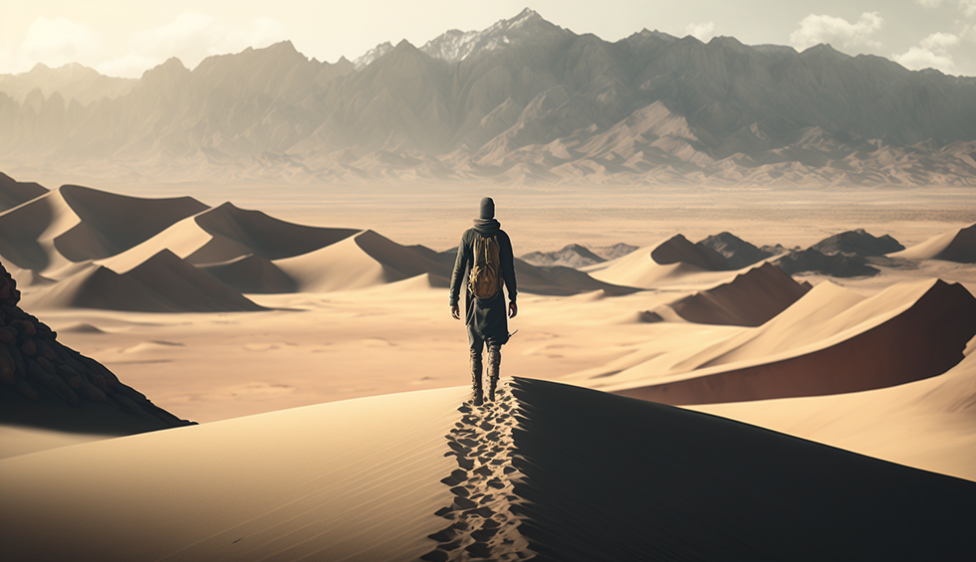
Ownership and Use of Images Generated Using AI
Ownership Issues
Photographers should not assume that they own the copyright in the images generated by the AI model they’re using. Currently, copyright law in many jurisdictions is not clear on whether, or under what circumstances, AI-generated images are eligible for copyright protection. However, recent guidance issued by the U.S. Copyright Office on March 16, 2023, is helpful on that issue. Before we explore that guidance, let’s spend a moment on the important case of “Zarya of the Dawn”, which shone a spotlight directly on this issue and was a driver for the issuance of the guidance by the U.S. Copyright Office.
“Zarya of the Dawn” Case
“Zarya of the Dawn” is a graphic novel created by New York-based author and artist Kris Kashtanova. It features imagery generated using Midjourney, an AI platform that creates images from text inputs or “prompts”. Initially, the U.S. Copyright Office granted copyright protection to Kashtanova’s work, but after becoming aware that Kashtanova had used AI in the creation of the images in the novel, it initiated the cancellation of the registration over concerns about the necessary degree of human authorship. After considering submissions from Kashtanova’s lawyer, the U.S. Copyright Office concluded on February 21, 2023 that:
“… Ms. Kashtanova is the author of the Work’s text as well as the selection, coordination, and arrangement of the Work’s written and visual elements. That authorship is protected by copyright. However, as discussed below, the images in the Work that were generated by the Midjourney technology are not the product of human authorship. Because the current registration for the Work does not disclaim its Midjourney-generated content, we intend to cancel the original certificate issued to Ms. Kashtanova and issue a new one covering only the expressive material that she created.”
In other words, the Copyright Office confirmed that copyright would remain in place for the novel’s text and the overall arrangement of the novel’s written and visual elements, but not the individual, AI-generated images. The following passages from the Copyright Office’s analysis of the application of copyright law to Midjourney images are particularly noteworthy for photographers who use Midjourney and similar text-to-image AI generation platforms:
“Based on the record before it, the Office concludes that the images generated by Midjourney contained within the Work are not original works of authorship protected by copyright. See COMPENDIUM (THIRD) § 313.2 (explaining that “the Office will not register works produced by a machine or mere mechanical process that operates randomly or automatically without any creative input or intervention from a human author”). Though she claims to have “guided” the structure and content of each image, the process described in the Kashtanova Letter makes clear that it was Midjourney—not Kashtanova—that originated the “traditional elements of authorship” in the images.
…
Rather than a tool that Ms. Kashtanova controlled and guided to reach her desired image, Midjourney generates images in an unpredictable way. Accordingly, Midjourney users are not the “authors” for copyright purposes of the images the technology generates. As the Supreme Court has explained, the “author” of a copyrighted work is the one “who has actually formed the picture,” the one who acts as “the inventive or master mind.” Burrow-Giles, 111 U.S. at 61. A person who provides text prompts to Midjourney does not “actually form” the generated images and is not the “master mind” behind them. Instead, as explained above, Midjourney begins the image generation process with a field of visual “noise,” which is refined based on tokens created from user prompts that relate to Midjourney’s training database. The information in the prompt may “influence” generated image, but prompt text does not dictate a specific result. See Prompts, MIDJOURNEY, https://docs.midjourney.com/docs/prompts (explaining that short text prompts cause “each word [to have] a more powerful influence” and that images included in a prompt may “influence the style and content of the finished result”). Because of the significant distance between what a user may direct Midjourney to create and the visual material Midjourney actually produces, Midjourney users lack sufficient control over generated images to be treated as the “master mind” behind them.
…
Nor does the Office agree that Ms. Kashtanova’s use of textual prompts permits copyright protection of resulting images because the images are the visual representation of “creative, human-authored prompts.”16 Id. at 10. Because Midjourney starts with randomly generated noise that evolves into a final image, there is no guarantee that a particular prompt will generate any particular visual output. Instead, prompts function closer to suggestions than orders, similar to the situation of a client who hires an artist to create an image with general directions as to its contents.”
As a result, notwithstanding that every photographer who uses Midjourney and similar image-generation AI platforms will tell you that there is significant learning, skill, creativity, time, and effort that goes into the conception and selection of descriptive text prompts used to generate the images, in this case, based on the administrative record before it, the Copyright Office concluded that Kashtanova was not the author, for copyright purposes, of the individual images generated by Midjourney.
The Copyright Office then went on to consider whether Kashtanova’s personal editing alterations of the images created by Midjourney were sufficiently creative to be entitled to copyright. After considering submissions made by Kashtanova regarding post-production edits made to two specific images in the novel, the Copyright Office stated that it was unable to definitively conclude that Kashtanova’s editing alterations were sufficiently creative to be entitled to copyright. However, the Copyright Office left room for the possibility of a different finding on a different evidentiary record, stating that, “[t]o the extent that Ms. Kashtanova made substantive edits to an intermediate image generated by Midjourney, those edits could provide human authorship and would not be excluded from the new registration certificate.”
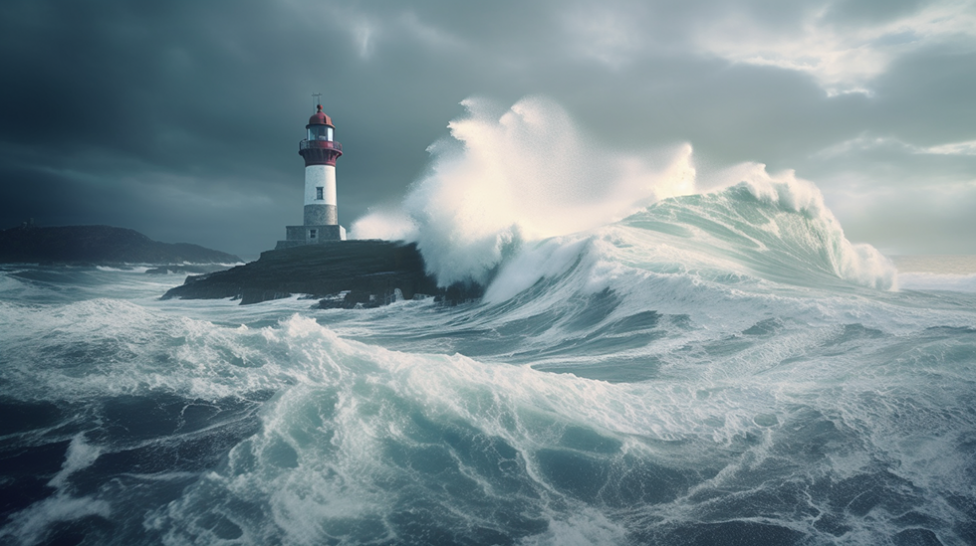
U.S. Copyright Office Guidance on Works Containing Material Generated by AI
Just a few weeks later, on March 16, 2023, the U.S. Copyright Office published guidance on its approach for examining and registering works containing material generated using AI. Key takeaways from the guidance include the following:
- Copyright can protect only material that is the product of human creativity.
- For copyright registration purposes, works must be the product of human authorship.
- In the case of works containing AI-generated material, the Office will consider whether the AI contributions are the result of “mechanical reproduction” or an author's “own original mental conception, to which the author gave visible form”. The answer will depend on the circumstances, particularly how the AI tool operates and how it was used to create the final work. This is necessarily a case-by-case inquiry.
- If a work's traditional elements of authorship were produced by a machine, the work lacks human authorship, and the Office will not register it. For example, when an AI technology receives solely a prompt from a human and produces complex written, visual, or musical works in response, the “traditional elements of authorship” are determined and executed by the technology—not the human user. Based on the Office's understanding of the generative AI technologies currently available, users do not exercise ultimate creative control over how such systems interpret prompts and generate material. Instead, these prompts function more like instructions to a commissioned artist—they identify what the prompter wishes to have depicted, but the machine determines how those instructions are implemented in its output. When an AI technology determines the expressive elements of its output, the generated material is not the product of human authorship. As a result, that material is not protected by copyright.
- In other cases, a work containing AI-generated material will also contain sufficient human authorship to support a copyright claim. For example, a human may select or arrange AI-generated material in a sufficiently creative way that “the resulting work as a whole constitutes an original work of authorship.” Or an artist may modify material originally generated by AI technology to such a degree that the modifications meet the standard for copyright protection. In these cases, copyright will only protect the human-authored aspects of the work, which are “independent of” and do “not affect” the copyright status of the AI-generated material itself.
- This policy does not mean that technological tools cannot be part of the creative process. Authors have long used such tools to create their works or to recast, transform, or adapt their expressive authorship. For example, a visual artist who uses Adobe Photoshop to edit an image remains the author of the modified image. To the extent, however, that an artist uses the AI-powered features in Photoshop, the edits will be subject to the above analysis. In each case, what matters is the extent to which the human had creative control over the work's expression and “actually formed” the traditional elements of authorship.
The Copyright Office also noted that:
- Applicants have a duty to disclose the inclusion of AI-generated content in a work submitted for registration and to provide a brief explanation of the human author's contributions to the work.
- AI-generated works implicate other copyright issues not addressed in its guidance. It has launched an agency-wide initiative to delve into a wide range of these issues. Among other things, the Office intends to publish a notice of inquiry later in 2023 seeking public input on additional legal and policy topics, including how the law should apply to the use of copyrighted works in AI training and the resulting treatment of outputs.
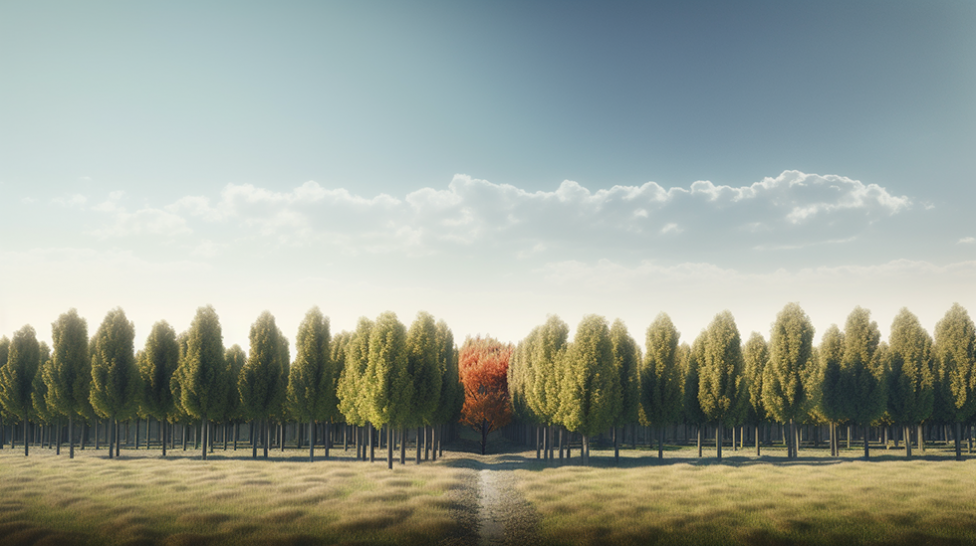
Practical Takeaways from Zarya of the Dawn and U.S. Copyright Office Guidance
The Zarya case and the U.S. Copyright Office guidance give rise to several practical points that photographers should keep in mind:
- Photographers should not simply assume they have copyright protection over images created using AI, as they may not.
- The U.S. Copyright Office has clearly left room for the possibility of copyright protection for images generated by AI that are subsequently altered by the user in post-production (for example, using Photoshop) with sufficient personal expression or creativity to constitute human authorship. However, it's not clear what will be sufficient to achieve that result with any given image. It is necessarily a case-by-case inquiry.
- Given that uncertainty, to maximize the potential for copyright to attach to AI-generated images, photographers should document the creative process they use. Most importantly, they should document the personal edits they make to their AI-generated images in post-production, which will better position them to argue sufficient human authorship should they need to do so (for example, in an application for copyright registration).
- The decision in the Zarya case and the guidance from the U.S. Copyright Office were based on the Office’s understanding of the functioning of particular AI technology at the time. Not all AI platforms use the same technology, and AI technology is advancing rapidly. As a result, different copyright outcomes are possible with different AI platforms and at different points in time as AI technology further evolves. Photographers using any of these platforms should seek to understand how the particular technology works, as well as the license grant provided under the platform’s terms of use, which is the next issue we’ll explore.
Licence Grant
Photographers should also consider the licence grant from the AI image generation platform under its terms of use. The license terms should be carefully reviewed to determine whether they limit the photographer's ability to use or sell the images. For example, do the license terms allow users to use the images commercially, or only non-commercially? Keep in mind that the terms of use will differ from platform to platform, and each should be reviewed in turn. Also remember that even if the terms allow for commercial use, the user may not have copyright protection (as discussed above), with the result that the user may not have a copyright claim against someone who uses their image without their consent.
Copyright or Trademark Infringement
Another significant issue with the use of AI-generated images is the potential for copyright infringement. If an AI algorithm generates an image that is very similar to an existing copyrighted image, it’s possible that it could constitute copyright infringement. However, similarity alone does not constitute infringement; there must actually have been copying. Independent creation could be a defence to a claim of copyright infringement.
Similarly, photographers should consider the use of trademarks in AI-generated images. If the images feature trademarked logos or designs, photographers should exercise caution. In some cases, permission may be required to display the trademarks. In other cases, for example, where the display is merely incidental, it could be permitted under the doctrine of “fair use” of trademarks, which operates on principles conceptually similar in purpose and intent to the fair use doctrine discussed above in relation to copyright.
This brings us back to the terms of use of the particular AI platform. The terms should also be reviewed to determine whether the platform provides any assurances on the generated content. For example, does the platform represent or warrant that the content doesn’t infringe on anyone else’s intellectual property? And what if the content does infringe, and you use it–will the platform indemnify you (compensate you for your losses) if you’re found liable to someone else for infringement? Photographers should not assume that the terms of use of the various generative AI platforms contain these sorts of assurances or protections. It’s more likely that the terms favour the platform rather than the user.
Rights of Publicity/Privacy
Photographers also need to be aware of the potential impact of AI-generated images on rights of publicity and privacy. If an AI algorithm generates an image of a recognizable individual, that individual may have rights to control the use of their likeness. Additionally, if the AI algorithm generates an image that includes private or personal information, it could be subject to privacy laws. To avoid infringing on rights of publicity and privacy, photographers need to have the appropriate licenses and permissions, but practically speaking, it may not always be possible to know when a license or permission is needed. For example, on a planet with billions of people, it’s not possible to know for certain that a face “randomly” generated by AI (i.e., where the user did not intentionally attempt to generate an image in a specific individual’s likeness) does not closely resemble the face of an actual person somewhere in the world. And to make matters worse, the terms of use of the AI platform are not likely to provide any assurances or protections for the photographer in this situation either.
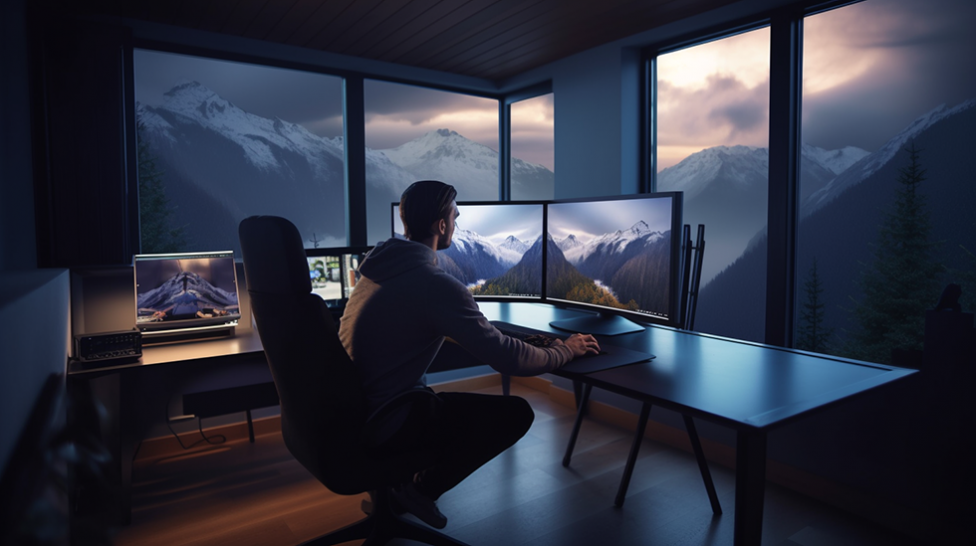
Final Thoughts
Generative AI is rapidly redefining the boundaries of what’s possible in the realm of image creation, and it will surely continue to do so. Photographers who use generative AI should be mindful of the copyright and related issues associated with their use of AI technology and platforms, and develop strategies to maximize the potential for copyright protection on AI-generated images of importance to them and minimize the potential for other intellectual property problems. Hopefully, this post has provided some useful, practical points to consider in that regard as we await further developments in the law in this area.
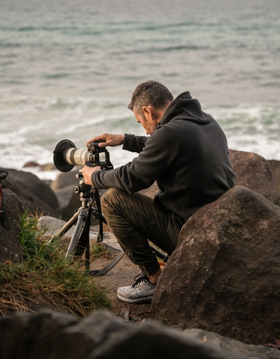
Jason Marino is a lawyer and an internationally awarded, nationally accredited professional landscape photographer. He lives and practices law in Alberta, Canada, which is also his primary photographic playground. You can view his work and connect with him here:
Website: www.jasonmarinophotography.com
Instagram: www.instagram.com/jasonmarinophotography/
Facebook: www.facebook.com/jasonmarinophotography/
Disclaimer: The content of this post is provided for informational purposes only, as a brief, general guide to the subject matter. It does not constitute legal advice or a legal opinion on any issue, and readers should not under any circumstances rely on, or act on the basis of, any of the content in this post. Readers should seek legal advice in their jurisdiction regarding their specific circumstances.
Image credits: The images in this post were created by Jason Marino using Midjourney after a few hours of newbie practice.
